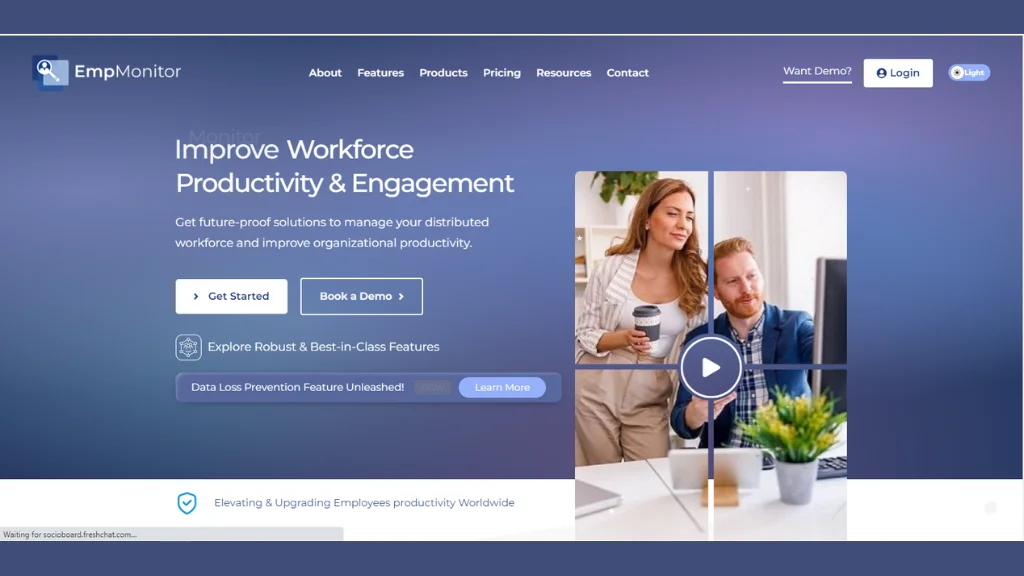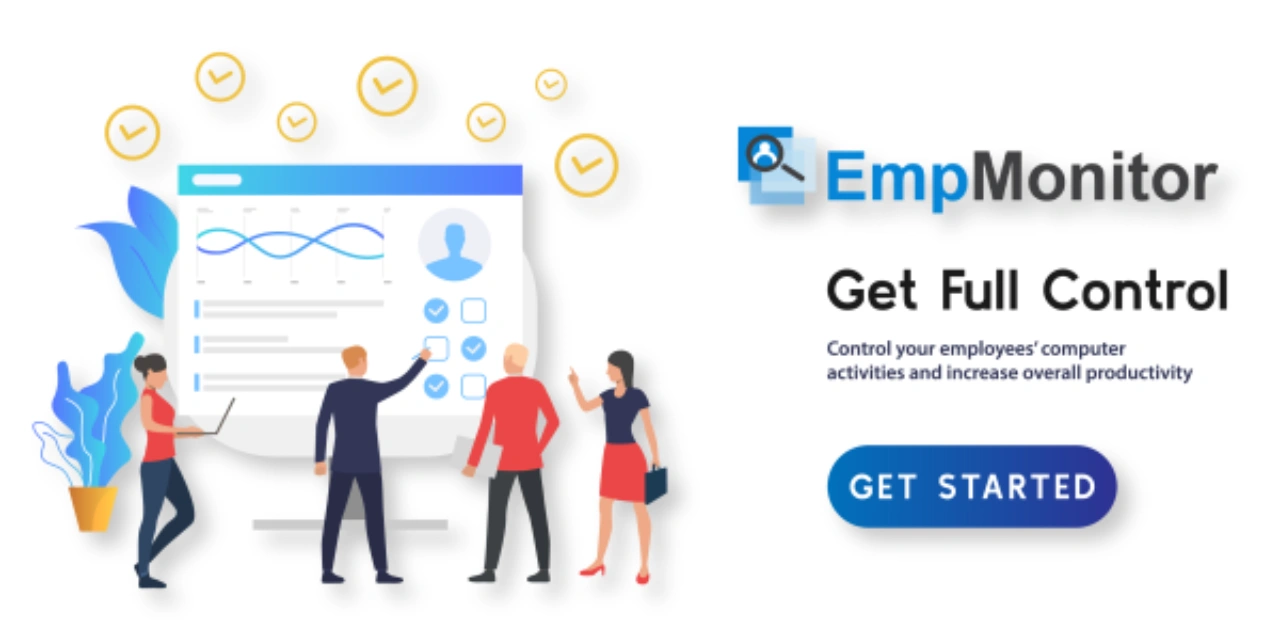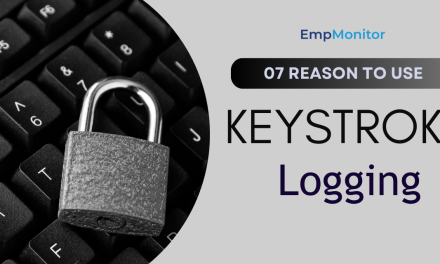Have you ever felt like you’re juggling too many things at once? You’re not alone. In today’s crazy-busy world, finding a balance between work and everything else can feel like trying to solve a puzzle with missing pieces.
Don’t worry! We’re here to explain to you how you can manage workload balance effectively. Balancing workload is like finding that sweet spot where you get stuff done without feeling pulled in a million directions. It’s about striking a balance where work doesn’t overshadow your entire life, allowing you ample time to engage in enjoyable and fulfilling activities.
In this blog, we’re going to explore what work-pressure balance is all about and how you can master it like a pro. There are no boring lectures or complicated theories here—just simple tips and tricks to help you live your best, most balanced life. So, buckle up and get ready to discover the secrets to finding harmony in the chaos. It’s going to be a fun ride.
Hit ‘Play’ Button & Tune Into The Blog!
What Is Workload Balance?
Balancing workload is the equilibrium you strive for between various demands and responsibilities in your life. It is the art of finding equilibrium, especially between tasks related to work and those about personal commitments. It involves effectively managing your time, energy, and resources to ensure that neither work nor personal pursuits dominate your life disproportionately.
Workload balancing is the balance between professional responsibilities, personal well-being, relationships, and leisure activities. It’s not just about dividing your time evenly between work and non-work activities but also about workload prioritization, tasks and commitments based on their importance and impact on your overall satisfaction and fulfillment.
Achieving workload balance requires self-awareness, efficient time management skills, setting boundaries, and making conscious choices about how you allocate your resources. It’s a dynamic process that may need adjustment as your priorities and circumstances change. Ultimately, the goal is to help you lead a happier and healthier life where you can do well in your job and enjoy your time.
What Happens When Employees Have A Balanced Workload?
Prioritizing balance in the workload is crucial for managers across all industries to engage employees fruitfully. Here are the vital reasons why having a balanced workload is essential.
Enhanced Employee Well-Being:
Employee well-being is a crucial part of workload balance. When workers have the right amount of work to do, they feel less stressed and have fewer health problems. According to research published in “The Lancet,” individuals working 55 hours or more per week face a 1.3 times higher risk of stroke compared to those working 40 hours or less.
However, due to a flexible work culture, it has become easier for the organization to manage their work schedule without overburdening their employees with extra work. And now, with remote and work-from-home options, it has also become easier for employees to manage their work-life balance accordingly.
Expanded Talent Attraction:
A company that prioritizes work-life balance attracts a wider pool of potential hires. According to studies conducted by LinkedIn, 63% of job seekers prioritize work-life balance when considering job opportunities. Additionally, employees are 3.7 times more likely to recommend an employer who prioritizes work-life balance.
Improved Employee Productivity:
Contrary to popular belief, working longer hours doesn’t necessarily equate to increased productivity. Employees with workload balance tend to be more productive and perform better. Research from Gartner reveals that 43% of workers believe that having greater flexibility in their work hours enhances their productivity.
What Happens When Employee Workload Is Unbalanced?
When employee workload is not balanced properly, it can negatively affect your team’s morale and performance. Here’s why:
Decreased Productivity
Having more work than they can handle reduces employees’ productivity. Burned-out employees are 13% less likely to feel confident about their work performance.
Increased Employee Turnover
A poorly personal workload management makes it harder to keep your current employees. Employees experiencing burnout are 2.6 times more likely to seek opportunities elsewhere.
Higher Costs
Replacing an employee is costly for businesses and disrupts the workload balance, with U.S. companies spending a trillion dollars annually on advertising, hiring, and training. Retaining employees helps minimize these expenses.
Declining Employee Health
An unbalanced workload negatively impacts both the physical and mental health of employees. Burned-out workers are 63% more likely to take sick day-offs. Additionally, a survey by Great Canyon University (GCU) found that poor work-life balance affects the self-care habits of 39% of workers and the emotional health of 38% of workers.
What Are The Criteria For Implementing Workload Balancing?
To successfully implement workload balancing, it’s essential to consider the following requirements:
Quality Assurance
Each step in the process of workload balance should experience minimal quality issues.
Equipment Reliability
Equipment at each step should have low breakdown rates.
Operator Competency
Operators should undergo training to minimize errors during operations.
Cross-Training
Operators should be proficient in multiple tasks to compensate for absences or unforeseen gaps.
Stable Workload
Incoming work into the process should remain stable, with few rush orders to disrupt operations.
How To Balance Workload?
Here are some tips to help you navigate your workload in the modern dynamics.
Tip-1: Put Important Projects First
The workload shifts frequently demand flexible resource allocation in a professional services environment. Teams often tackle easy, low-value tasks first, neglecting high-value projects. This habit harms workload balance and customer satisfaction. Prioritize projects based on their importance and visibility, ensuring major projects receive attention first.
Tip 2: Develop A Resource Plan
Creating a human resource plan helps anticipate workload versus team capacity, guiding hiring decisions for balanced work distribution and project success. Consider employees’ strengths and skills to assign tasks effectively, maximizing efficiency and preventing burnout.
Tip-3:Equitably Distribute Workload
As workload increases, evenly distributing tasks among team members becomes crucial. Overworked employees can lose motivation and productivity, jeopardizing retention and growth. Adjust workload periodically to maintain balance and foster team development.
Tip-4: Anticipate Capacity And Demand
Forecasting capacity involves estimating the time needed for tasks beyond weekly work hours. Workload balance requires monitoring employees’ hours and accounting for leave and unexpected absences. Plan projects accordingly to prevent burnout and maintain productivity.
Tip-5: Avoid Overburdening Employees
Overloading employees with heavy workloads leads to burnout and poor performance. Rewarding hardworking employees with more tasks can backfire, undermining company culture. Implement automated workload planning to promote flexibility and work-life balance while ensuring efficiency.
Thanks to workforce management software like EmpMonitor it has become easier for organizations to track their workload and manage tasks allocation accordingly. This helps the employers to pre-plan and manage their workload without overburdening their employees.
EmpMonitor- An Employee Monitoring Software
EmpMonitor is a comprehensive employee monitoring software designed to help businesses with workload balance. It also ensures productivity and efficiency. With its features, EmpMonitor enables employers to monitor employee activities, track work progress, and promote a healthy work-life balance. Here are some of its key features:
Activity Monitoring
EmpMonitor allows employers to monitor employee activities in real time, including website visits, application usage, and active hours. This feature helps employers understand how employees spend their time and identify potential productivity drains.
Time Tracking
With EmpMonitor, employers can track the time spent by employees on various tasks and projects. This feature helps businesses accurately measure work hours, identify time-wasting activities, and optimize workload distribution.
Productivity Analysis
EmpMonitor provides detailed insights into employee productivity levels based on their activity and time-tracking data. Employers can identify top performers, address productivity issues, and implement strategies to improve efficiency.
Workforce Management
EmpMonitor offers tools for workforce management, including attendance tracking, leave management, and performance evaluation. Workload balance across the organization is attainable by tracking employee attendance, managing leave requests, and assessing employee performance.
Remote Work Support
EmpMonitor provides essential support for managing remote teams in an increasingly remote work environment. Employers can monitor remote employee activities, track work progress, and promote collaboration while maintaining work balance and productivity.
Data Security and Compliance
EmpMonitor prioritizes data security and compliance, ensuring that employee monitoring data is protected and used responsibly. The software adheres to industry standards and regulations, providing employers peace of mind while monitoring employee activities.
Hence, EmpMonitor is a powerful tool for businesses seeking to maintain workload balance, promote productivity, and optimize employee performance. With its robust features and intuitive interface, EmpMonitor empowers employers to monitor employee activities, track work progress, and create a supportive work environment conducive to success.
Read More
How Workload Prioritization Can Grow Your Organizational Progress
How To Manage Workload Planning In 7 Steps?
How To Streamline Your Personal Workload Management Process
Benefits Of A Balanced Workload
Workload balance offers several advantages, including:
- Consistent Cycle Times: When all steps in the process have similar cycle times, employee motivation remains high.
- Maximized Throughput: Workload balance helps maximize the throughput of the process.
- Reduced Inventory Accumulation: Workload balance ensures that there are no points in the process where inventory needs to accumulate.
- Decreased Rework: With workload balance, rework is minimized as mistakes due to overload of bottleneck processes are reduced.
Wrapping Up
Effective workload planning and balancing is the cornerstone of productivity and employee well-being in any organization. Businesses can optimize workflow efficiency and foster a healthy work environment by strategically allocating tasks, prioritizing projects, and considering employee capacity. Workload evenness enhances productivity minimizes burnout, reduces turnover, and promotes a better work-life balance for employees.
Furthermore, embracing technology and leveraging tools like EmpMonitor can streamline workload balance and management processes, providing real-time insights and enabling proactive decision-making. With thoughtful planning and continuous refinement, businesses can navigate challenges, seize opportunities, and thrive in today’s dynamic work landscape.
Remember, effective workload balancing isn’t just about getting things done—it’s about empowering people to do their best work and thrive in the process.














